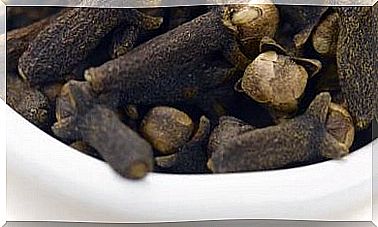How To Make Your Own Almond Milk
Almond milk is a good and healthy alternative to cow’s milk. But how do you make it at home to make it really tasty and nutritious?

- Homemade almond milk recipe
- Is almond milk healthy? When is it convenient?
- Is almond milk sustainable?
- What almond milk to buy?
Alternatives to cow’s milk are becoming increasingly popular. One of the most chosen for its flavor and nutritional properties is almonds. You can always buy a commercial drink, but they often contain too much additives and too little almond. It is better that you learn to prepare it at home.
Homemade almond milk recipe
All you need for this almond milk recipe are almonds, water, and a cloth filter (if you don’t have one, you can use a clean kitchen towel or a very fine metal strainer).
Ingredients:
- 200 g of almonds
- 750 ml of water
Elaboration:
- Soak the almonds overnight. The next morning take them out of the water, discard it, and put them in a food processor along with fresh water.
- Mix the two ingredients until you get a smooth liquid.
- Place the bag, cloth, or strainer over a large bowl. Carefully add the non-dairy milk. The leftover almond puree should remain on the cloth or strainer, the milk will land in the bowl.
- Gently squeeze out the almond remains. If you are using a strainer, you can squeeze the puree under pressure with a spoon.
You can drink the almond milk as is or give it your personality with a little cinnamon, pure cocoa or cardamom, for example. Store in a sterile glass bottle in the refrigerator. There it will remain for about four days.
It is advisable to use organic almonds for the recipe. You can use more or less water depending on whether you prefer thick or liquid milk.
Do not throw away the almond remains, they can be used for cakes, creams, etc. If you are in a hurry you can make the milk with ground almonds, which does not need soaking.
Is almond milk healthy? 8 indications to drink almond drink
Almond milk is healthy.
However, when the almonds are soaked and filtered, many minerals are lost, so the plant-based alternative contains little protein (most of it remains in the paste that you have left over from making the milk). In return, it provides less fat and more carbohydrates.
The sugar content is usually lower than that of cow’s milk.
Another thing is commercial almond milk. Manufacturers often enrich it with B vitamins and calcium, among other nutrients. The purchased varieties usually contain less than ten percent almonds; instead they contain additives such as salt, emulsifiers or flavorings.
The almond drink is especially recommended in the following cases :
- People with intolerance to lactose or cow’s milk. It is also suitable for celiacs and those who have a soy allergy, as it does not contain lactose or gluten.
- In patients with hyperlipemia or hypercholesterinemia it is ideal, since its unsaturated fats are very healthy. Better if it is taken without heating it more than 40º C so that it does not lose properties or modify the fat.
- It is a milk well tolerated by diabetics. It is not necessary to sweeten it or add sugar since the almond contains enough carbohydrates.
- In children with atopy or eczema. It is a treatment popularized by the Swiss doctor Bircher-Benner, with good results.
- In infantile diarrhea in children with artificial feeding or young children who follow a varied diet (in breastfed infants, it is better to maintain breastfeeding). If it is used in infants as a substitute for breast milk, it is preferable to mix it with other seed horchatas to improve calcium absorption.
- It is recommended for the expectant mother, especially if she is breastfeeding.
- In children with growth problems, nervous problems or to improve their intellectual performance.
- It is also recommended for older people who have lost teeth and have difficulty chewing.
Is almond milk sustainable?
Cows produce methane, which is why cow’s milk has a relatively high CO2 footprint. According to researchers at the University of California, the production of a liter of almond drink emits ten times less greenhouse gases than that of cow.
But almond-based milk also has disadvantages: making almond milk consumes 17 times more water than cow’s milk. This is particularly problematic as almonds only grow in hot countries, which are often already short of water.
The study was conducted with almonds grown in California. Water consumption in European almond plantations is likely to be somewhat lower, but there are no studies on this yet.
On the other hand, keep in mind that if the almonds you use are not organic, they could have been treated with pesticides that kill insects, including pollinating bees.
Organic, sweetened or natural: which almond milk to buy?
Not all types of almond drinks are equally recommended. In some of them, pesticides, cleaning agent residues and toxic heavy metals, among other things, have been found. In some there are additives that contain phosphate, which in too large quantities can damage the kidneys and increase the risk of cardiovascular diseases.
If you want to buy almond milk, look for certified organic products from Europe. Or simply prepare the milk yourself using organic European almonds.
Don’t forget to try a different plant-based milk: oat milk, for example, requires less water than almonds and is also very healthy. There are also many very good oatmeal drinks on the market.









